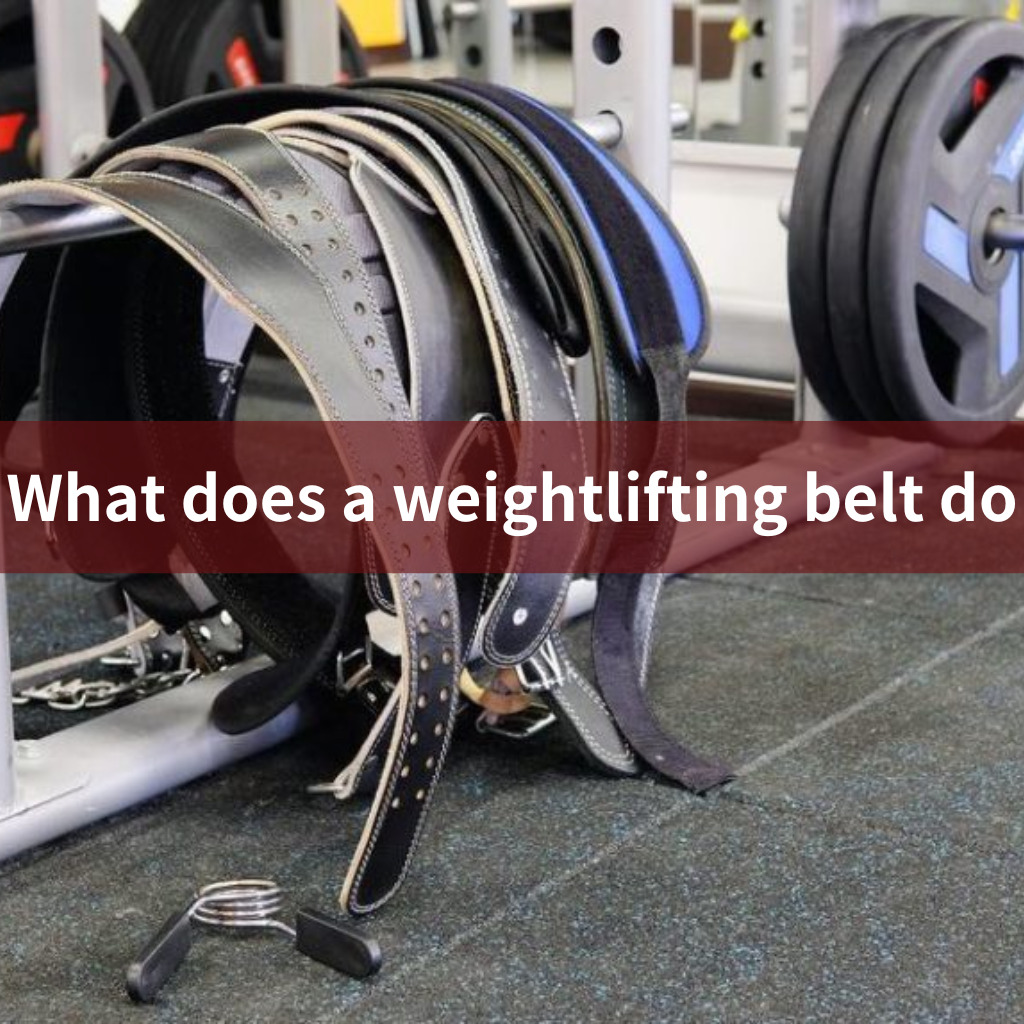You’re mid-squat, legs shaking, core braced, and suddenly—whoa!—your lower back screams louder than your gym playlist. Sound familiar?
Enter: the lifting belt. It’s not just a gym fashion statement or something only powerlifters use. When worn right, a lifting belt becomes your ultimate training partner—like a spotter that hugs your core and tells your spine, “I got you, bro.”
Let’s dive into everything you need to know about lifting belts—from why they matter, how to use them, and whether you actually need one, all served up with a dose of humor and real talk.
What Is a Lifting Belt?
A lifting belt is a thick, sturdy strap (usually leather or nylon) that wraps snugly around your waist. Its job is to support your spine and core when lifting heavy weights, especially during squats, deadlifts, overhead presses, and more.
It’s not meant to do the work for you, but it helps you brace your core better by increasing intra-abdominal pressure (fancy term, we know). Think of it as turning your midsection into a human pressure cooker for strength.
The Science Behind Lifting Belts: How They Work
Let’s break down the magic without getting too nerdy. When you wear a lifting belt and take a deep breath before a heavy lift, your abs push against the belt. This creates something called “intra-abdominal pressure” – fancy talk for “your core gets super tight and strong.”
This pressure acts like a natural back brace, supporting your spine during heavy lifts. Your core essentially becomes a pressurized column of stability. The result? Better support, potentially heavier lifts, and reduced risk of injury.
One study in the Journal of Strength and Conditioning Research found that wearing a lifting belt during squats increased core activation by nearly 13%. That’s significant when you’re trying to protect your back during challenging home workouts!
Why Use a Lifting Belt?
Let’s bust a myth: A lifting belt won’t make you lazy. It makes you stronger and safer, if you use it the right way.
Key Benefits:
- Improves lifting posture and spinal alignment
- Reduces lower back stress
- Helps you lift heavier, with more stability
- Boosts confidence under the bar
- Increases core engagement, not decreases!
Who Needs a Lifting Belt? (Hint: Maybe You!)
- You might benefit from a lifting belt if:
- You’re lifting heavy weights (typically above 75-80% of your one-rep max)
- You perform compound movements like squats, deadlifts, or overhead presses
- You want extra core support during challenging lifts
- You’re recovering from a minor back issue (with doctor approval)
- You want to improve your lifting technique and core engagement
Contrary to popular belief, lifting belts aren’t just for elite athletes. Even if you’re working out at home with moderate weights, a belt can help you develop proper bracing techniques and build confidence with heavier loads.
When to Strap It On (And When to Leave It Off)
Here’s when to reach for your belt:
- During your heaviest sets of squats and deadlifts
- When performing overhead presses with challenging weights
- During maximal or near-maximal attempts
- When doing Olympic lifts like cleans or snatches
- When you need extra confidence for a challenging lift
Skip the belt when:
- Doing lighter warm-up sets
- Performing isolation exercises (bicep curls, leg extensions)
- Working on core-specific exercises (the belt shouldn’t replace core training!)
- Doing cardio or high-rep, low-weight training
Remember, a lifting belt is a tool, not a crutch. Don’t become dependent on it for every exercise. Your core needs to work unassisted sometimes to develop proper strength.
Types of Lifting Belts: Which One Should You Choose?
Choosing the right lifting belt isn’t just about style—it’s about support, performance, and comfort. Here’s a breakdown of the main types, who they’re best for, and why they matter.
1. Leather Belt (4-Inch Power Belt)
Best for: Powerlifters, heavy lifters
Why it’s awesome: Super sturdy. Offers excellent core bracing during squats and deadlifts.
Watch out: Stiff at first. Takes time to break in.
Bonus Tip: If you’re chasing personal records, this is your ride-or-die belt.
2. Lever Belt
Best for: Competitive lifters, maximal lifts
Why it’s awesome: Locks in super tight with a quick-flick lever. No fumbling mid-set.
Watch out: Needs a screwdriver to adjust size. Not the most versatile.
Bonus Tip: Stick with this if you’re lifting in the 90–100% range often.
3. Prong Belt (Single/Double)
Best for: All-around lifters
Why it’s awesome: Classic design. Adjustable fit. Great for progressive training.
Watch out: It can be tricky to tighten evenly, especially the double-prong.
Bonus Tip: Single prong = easier to use, double prong = slightly more secure.
4. Nylon Belt
Best for: CrossFit, HIIT, functional training
Why it’s awesome: Lightweight, flexible, and breathable. Moves with you.
Watch out: Less support than leather. Not ideal for max-effort lifts.
Bonus Tip: Perfect if you’re jumping between lifting and dynamic moves.
5. Velcro Belt
Best for: Beginners, casual gym-goers
Why it’s awesome: Quick on/off. Comfortable and budget-friendly.
Watch out: It wears out faster. Velcro loses grip over time.
Bonus Tip: A solid entry-level belt while you build strength and confidence.
Max Strength + Stability? Leather or leather belt.
WODs + Movement-Based Lifting? Nylon all the way.
Just Starting? Velcro or prongs is your no-fuss friend.
How to Wear a Lifting Belt?
Follow these steps for proper belt placement:
- Position the belt around your waist, not your hips or ribcage
- Center it over your navel area
- Tighten until snug but not painfully tight
- You should be able to fit your hand between the belt and your body
- Take a deep breath and brace your core against the belt before lifting
- Maintain this brace throughout the entire lift
The most common mistake? Wearing the belt too loosely or too tight. A too-loose belt provides minimal support, while an overly tight belt restricts breathing and proper bracing.
Breaking In Your New Best Friend
Leather belts require a break-in period, similar to good leather shoes. Here’s how to speed up the process:
- Roll the belt in both directions several times
- Wear it during lighter training sessions initially
- Bend and flex it by hand when not in use
- Apply leather conditioner (for leather belts only)
- Be patient – most belts need 1-2 weeks of regular use to soften up
Nylon belts typically require no break-in period – one of their major advantages for home fitness enthusiasts who want immediate comfort.
Top Lifts That Pair Perfectly with a Belt
You don’t need a belt for every lift, but here’s where it shines:
✅ Back squats
✅ Front squats
✅ Deadlifts
✅ Overhead press
✅ Clean & jerk
✅ Heavy barbell rows
Optional but helpful:
✅ Trap bar deadlifts
✅ Landmine squats
✅ Z-presses
Skip the belt for:
✅ Pull-ups
✅ Arm day
✅ Mobility drills
✅ Walking lunges (unless you’re lifting a fridge)
The Lifting Belt Controversy: Addressing Common Concerns
Some fitness experts claim lifting belts weaken your core or create dependency. Let’s address these concerns:
Myth #1: “Lifting belts weaken your core muscles.”
Reality: Research shows proper belt use increases core muscle activation. The key is using it correctly – as a tool to brace against, not as a replacement for core strength.
Myth #2: “You’ll become dependent on a belt.”
Reality: Only if you use it for everything. Use belts strategically for your heaviest lifts while continuing to train beltless for moderate weights and core exercises.
Myth #3: “Belts are only for professional lifters.”
Reality: Anyone lifting challenging weights can benefit from proper belt use, especially during compound movements that stress the spine.
Myth #4: “Lifting belts prevent you from learning proper form.”
Reality: A belt can help you feel proper bracing mechanics, improving your mind-muscle connection for better overall technique.
Real Talk: Potential Drawbacks of Lifting Belts
No fitness tool is perfect. Here are some legitimate considerations:
- Belts can raise blood pressure temporarily during lifts
- Improper use might create false confidence with weights that are too heavy
- Some people become psychologically dependent on belts
- Quality belts represent a significant investment
- They’re one more thing to carry in your gym bag
The solution? Use belts strategically, not universally. And remember – a belt complements good technique; it doesn’t replace it.
Lifting Belt vs. Weightlifting Belt vs. Back Support Belt
These all sound similar but serve different purposes.
|
Name |
Purpose |
|
Lifting belt |
Performance & strength |
|
Weightlifting belt |
Olympic lifts, more flexible |
|
Back support belt |
For injury recovery, not lifting |
Confused? If you’re training strength or hypertrophy, a lifting belt is your best bet.
Caring for Your Lifting Belt
Want your belt to last longer than your gym crush? Treat it right.
- Don’t toss it in your bag, sweaty—let it air dry
- Wipe it down weekly (especially leather belts)
- Avoid extreme heat or moisture
- Condition leather belts every few months
It’s a training tool—not a sweat sponge.
DIY Belt Alternatives When You’re Just Starting Out
Not ready to invest in a belt yet? Try these temporary alternatives:
- A thick resistance band wrapped around your waist
- A weightlifting dip belt without weights attached
- A heavy-duty luggage strap (in a pinch)
These won’t provide the same level of support as a proper lifting belt, but they can help you practice the bracing sensation before investing.
Quick Recap:
- Lifting belts help brace your core and protect your back
- Use for heavy squats, deadlifts, and presses
- Don’t overuse—train raw too
- Choose leather for strength, nylon for flexibility
- Brace properly, or it’s just gym fashion
The Bottom Line: Is a Lifting Belt Right for Your Home Gym?
If you’re pushing yourself with challenging weights, particularly in squats, deadlifts, and presses, a quality lifting belt is a worthwhile investment for your home gym. Think of it like a good pair of running shoes – not necessary, but certainly beneficial for performance and potential injury prevention.
Start with an affordable option if you’re testing the waters. As you progress in your strength journey, you might consider upgrading to a more durable leather belt that will last for years.
Remember that a lifting belt is just one tool in your fitness arsenal. It won’t transform your lifts overnight, but when used properly as part of a well-designed training program, it can help you lift safer, stronger, and more confidently right in the comfort of your home gym.
Now go strap in and crush those PRs – your back will thank you later!


